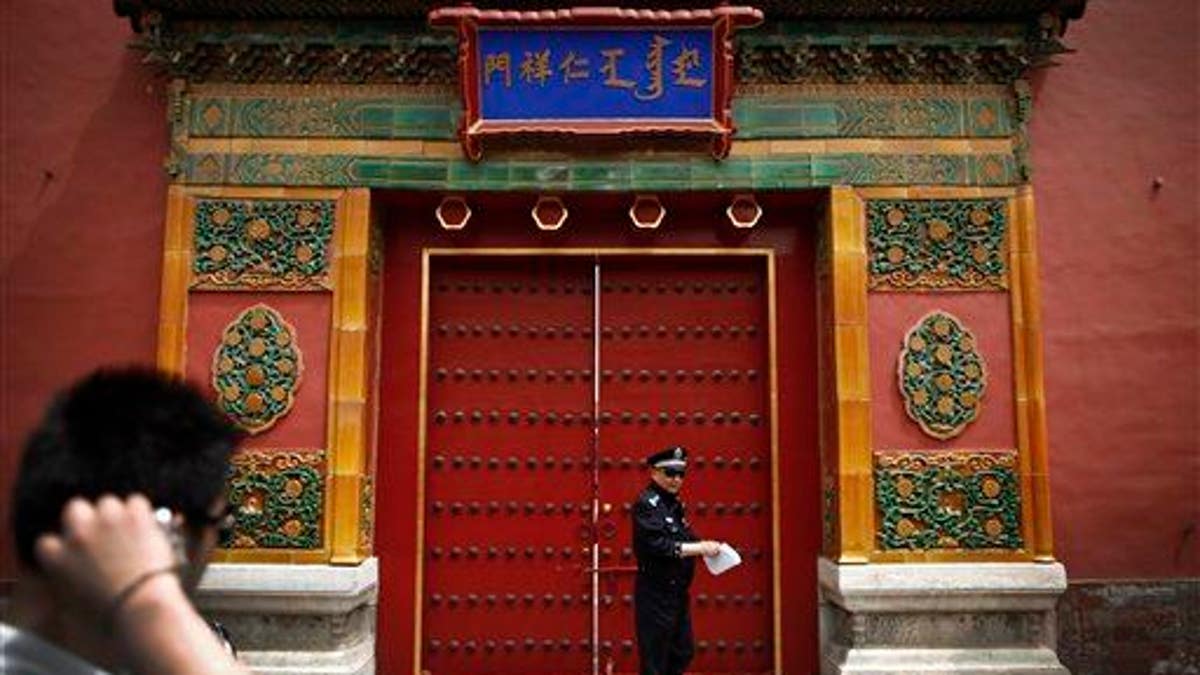
A tourist looks at a policeman stand in front of the entrance doorway to the Palace Museum, which announced the find. (AP Photo/Andy Wong)
In the 13th century, Kublai Khan—grandson of Genghis Khan—conquered China, effectively ruling over all of it from Beijing. The Mongolian bestowed upon his dynasty a Chinese name, Yuan, and built a palace that Marco Polo described as "the greatest ... that ever was," with a vermilion, yellow, green, and blue roof and a dining hall with a capacity of 6,000, per the BBC.
But Polo's writings have been among the best remains of the imperial palace, which effectively disappeared sometime after the Yuan dynasty's 1368 end—until, perhaps, now. The South China Morning Post reports that archaeologists believe they know where the Yuan palace was built.
The Forbidden City served as the palace for the Ming and then Qing dynasties, and the Post reports that it's long been thought the Yuan palace stood near there.
A little closer than "near," it turns out: Archaeologists found a 10-foot-thick "rammed earth and rubble foundation" beneath three previous layers of construction done under early and late Ming and Qing rulers.
Wang Guangyao, the deputy director of the Palace Museum's Institute of Archaeology, tells the Post the style of the foundation is identical to the ruins of another capital of the Yuan dynasty.
Wang adds that the size of the foundation is atypical of Yuan buildings and suggests it could have been part of a massive hall. It's not the only recent Kublai Khan-related find: Last July archaeologists found a portion of the hull of a ship he sent as part of an armada that tried in vain to invade Japan, the Telegraph reported.
(Another recent, "truly miraculous" find: the original Alamo?)
This article originally appeared on Newser: Palace Marco Polo Called 'Greatest Ever' May Have Been Found
More From Newser
